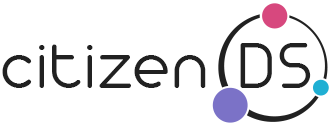We’re just going to get right to the point here: our software has a lot of automation built into it…like…A LOT. When we started building this software, we had one goal in mind: give the power of data science to everyone, yet still allow employees to do data science in a manner meaningful to their skill level. It was out of this goal that we developed our three-levels of automation.
Do Everything
The first and highest level of automation is what we like to call the “do everything” button. If you’re entirely new to data science, you’re going to love this. You give us the data, tell us what you’re interested in predicting, and hit the giant “do everything” button. Go grab a cup of coffee or take a lap around the office while our software cleans, optimizes, and trains the best machine learning model to fit your data. Congratulations, you’re now a data scientist…except you didn’t have to spend years of your life reading crazy Egyptian hieroglyphics (ie: math papers) or learning to code and spending HOURS looking for one stupid, misplaced semi-colon. We’re envious… trust us.
Section Specific
Ok, so you’re not totally new to the whole data game, but you’re also not yet a wizard. That’s where our second level of automation comes into play. Let’s say you’re comfortable with cleaning data, but don’t have a lot of experience with optimizing the data (or as us data nerds would say: “feature engineering”). Not a problem, you can tell us to go ahead and just take care of that whole section so you don’t have to. Our second level of automation allows you to pick what sections you do and don’t want to do. Think of it like your high school cafeteria…except for data…and without the terrible food.
Variable Specific
The last level is for those data gurus who know exactly how their data should be handled and enjoy getting their hands dirty. Our software will let you tell us what you want done for all of your variables, and we’ll do it… but there may be times where you really aren’t sure what the best move is in a particular section for a particular variable, and that’s where our last level of automation shows up. Let’s say you’re in deep in the feature engineering section and you’re optimizing each and every variable using your domain knowledge, but then you get to variable X, and you hit a roadblock. Take the log form? No, convert it to a z-score. No! Square root it… why don’t you let us go ahead and take care of this one for you.
